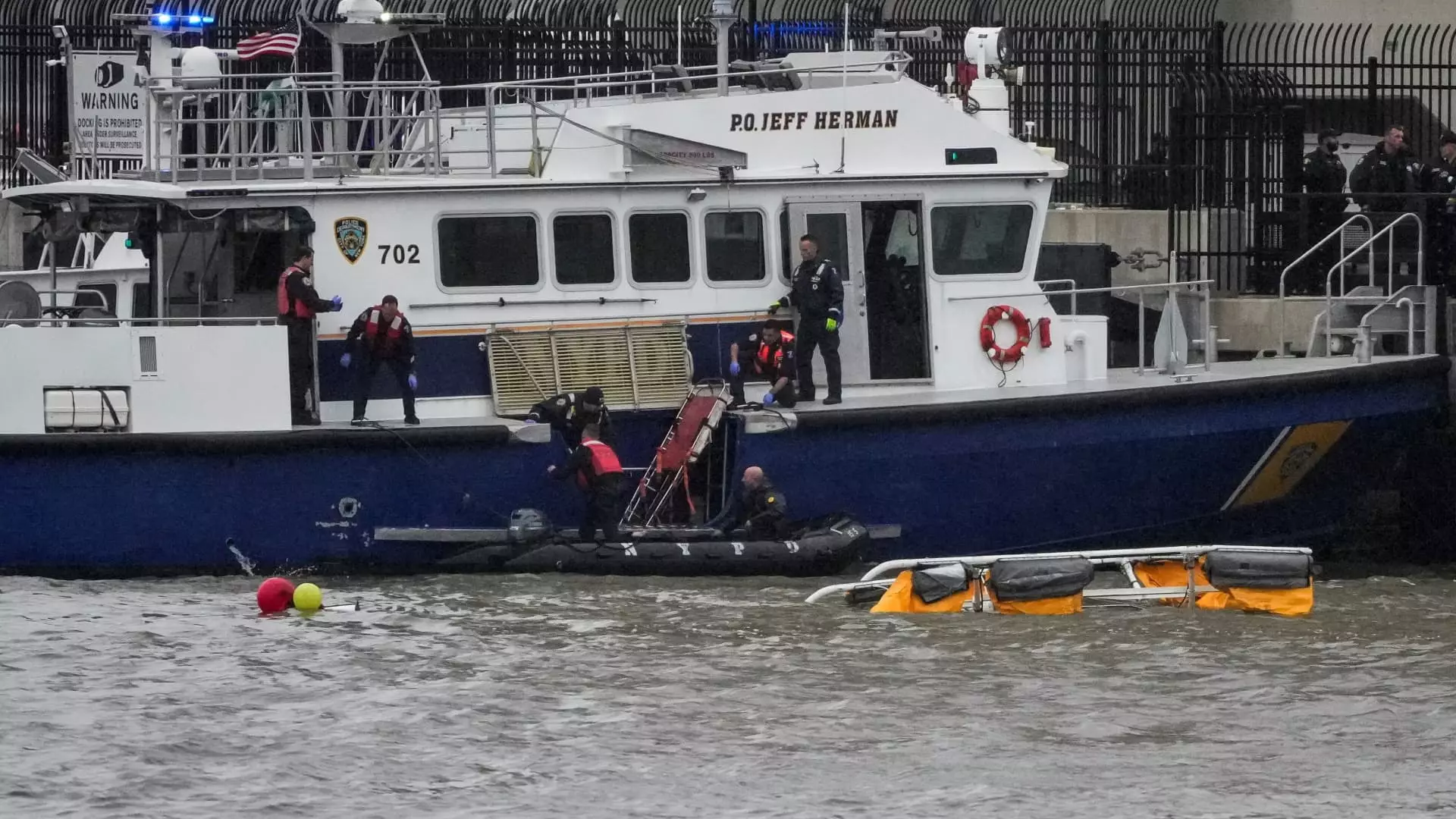In a shocking turn of events, a helicopter tragically plummeted into the Hudson River near Manhattan, claiming the lives of at least five individuals on board, according to reports by NBC New York. The single survivor was rescued from the water, highlighting both the perilous nature of helicopter flight and the swift response of emergency services. This incident, occurring in such a busy metropolitan area, underscores the risks that accompany aerial transportation, especially in areas dense with human activity.
Eyewitness Accounts Elevate Concern
As video footage surfaced on social media platforms showing the helicopter submerged upside down, eyewitness testimonies began to trickle in. One bystander recounted seeing the helicopter struggling before it ultimately lost a propeller and nosedived toward the water. Such descriptions not only add to the immediate horror of the situation but also raise critical questions about safety protocols and aircraft maintenance. This incident serves as a stark reminder of the precarious nature of rotorcraft operations, especially when they are involved in civilian transport or sightseeing flights.
The Role of Technology in Tracking Flight Safety
Flight-tracking tools like FlightRadar24 provided crucial data about the helicopter’s last-known movements. The aircraft, identified as a Bell 206L-4 LongRanger, had been spotted flying along the Hudson River, reaching altitudes of around 1,100 feet before its abrupt turnaround near Fort Lee, New Jersey. This technological capability offers a glimpse into the potential for enhanced safety measures and risk assessment in aviation; however, it also creates an unsettling scenario where a calamity can be traced in real-time. The implications of this incident may ignite discussions about the safety requirements for commercial operations in urban environments.
Investigation and Its Implications for the Industry
In response to the crash, the National Transportation Safety Board (NTSB) has announced that it will initiate an investigation into the events leading up to the tragedy. Ascertaining the causes of such accidents is vital not only for accountability but also for implementing strategies that could prevent future occurrences. The aviation industry may face scrutiny over the safety checks it employs, particularly in the face of increasing demand for aerial tourism and urban transport solutions.
Community Impact and Response
This horrific event has not only resulted in significant loss of life but also sent shockwaves through the Manhattan community. As emergency vehicles flooded the area, concerns over traffic delays and safety protocols arose. The NYPD’s alert regarding anticipated disruption to local traffic emphasizes the far-reaching effects of a single incident in a bustling city. Community members are left grappling with the emotional aftermath, while the incident inevitably brings into focus the delicate balance between urban aviation and public safety.
The implications of this helicopter crash transcend mere headlines; they touch upon broader themes of infrastructure, regulation, and human safety in an urban sprawl characterized by constant movement and technological advancement.


Leave a Reply